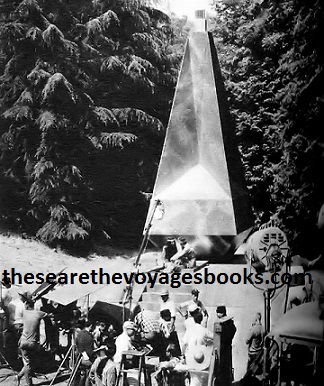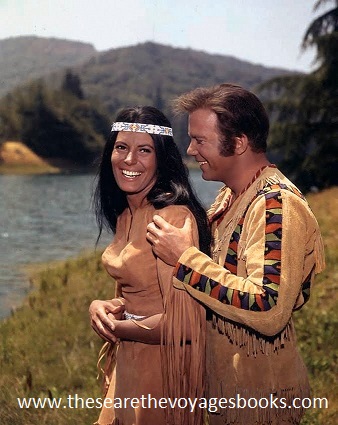June 11 through 18, 1968
|
This week, 48 years ago, the Star Trek cast and crew were on location at Franklyn Reservoir in Los Angeles filming “The Paradise Syndrome.”
Regarding the obelisk, Production Designer Matt Jefferies outdid himself once again. The impressive prop was the largest and most expensive to appear in the original series (unless you want to consider the shuttle craft Galileo a “prop”). Bill Blackburn, serving as William Shatner’s lighting stand-in, was on location the days they filmed on and around the Obelisk. He said, “They built that out of Plexiglas. It was brought in on a flatbed. And it weighed a lot. I would say it was at least 40 feet above the platform that it was [sitting] on, so it was probably even taller – 45 to 50 feet.” |
|
Gene Roddenberry was especially taken by “The Paradise Syndrome,” and, in one of many memos on the subject written to producer Fred Freidberger, he said: “Our story here, the essential and I think the most interesting and different one for our series, is a Herman Melville theme, i.e., a modern man finding his “Tahiti,” that natural and simple and happy and untroubled life all of us dream about some day finding. And, having found it and having held it in his hand, he learns he’s incapable of closing his hand around it and keeping it because all of us are innocent prisoners of our own time and our own place. And, as with Melvin’s Typee, neither can our modern man (or his clerk from Boston) take his woman from this simple life back to his land and his time, since she would be destroyed by it as he would be if he stayed there. This is the premise and the theme; a strong one if used properly and certainly a most powerful and enduring one in Western Literature…. Moreover, it is a great change of pace and starring vehicle for Kirk, as well as giving us the extra of Mr. Spock and the Enterprise tale going on at the same time with all the advantages of heightening suspense and pace by intercutting back and forth.”
|
|
Roddenberry was right. It was “a great change of pace” and also “a most powerful and enduring one in Western Literature.” “The Paradise Syndrome” has stood the test of time. Watch it again this week and be reminded why we still talk about and love Star Trek nearly 50 years since we first heard of it.
Read more about the writing and making of “The Paradise Syndrome" in These Are the Voyages – TOS [Star Trek: The Original Series]: Season Three, by Marc Cushman, available now.



